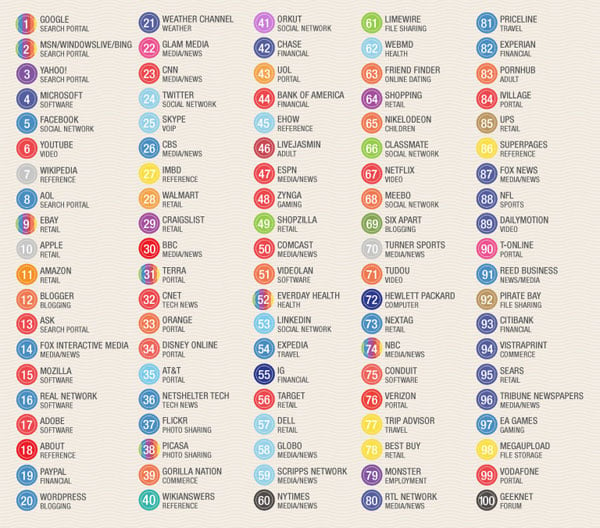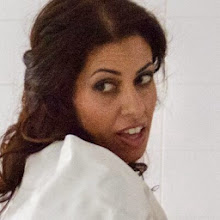
The rumours have been floating around the web for the last week or so that Apple will be holding a press event on March 2nd to announce details of the iPad 2. Well today Apple have gone and confirmed those rumours and have sent out invites for the official press event entitled ” Come see what 2011 will be the year of”
It’s fairly obvious to assume from the picture that it will be an iPad that’s going to be the focus of the event. It's not clear as to whether or not the iPad will actually be available on March 2nd or not, but one things for certain we will at last find out whats going to be in the iPad 2. It will be interesting to see if its any smaller in size as rumours have suggested and Apple will almost certainly want to be putting at least one if not two cameras in there if they want to keep up with the competition.
All will be revealed next Wednesday… the event will be held at the Yerba Buena Center for the Arts in San Francisco at 10:00am where Apple have launched products before.
Thursday, February 24, 2011
iPad 2 to be launched next week on Wednesday 2nd March
Wednesday, February 23, 2011
An app for instant idea evaluation
Creatives always have the same problem: is an idea any good? With this app we can apparently get an instant evaluation. You record your idea into your iPhone and then hold the phone over your head. After a few seconds of "processing" you either get a bright lit light bulb (a good idea) or an unlit lightbulb (a bad idea).
More of a fun app then a serious one methinks...
Download it here.
Monday, February 21, 2011
Monday, February 7, 2011
The colours of the Top 100 web brands

In the world of brand design, choice of colour provides the potential for a wealth of carefully crafted and powerfully communicated messages about your brand.What is the most popular and dominant colour online?
Creative community blog COLOURlovers researched the brand colours of the world's top 100 sites and discovered that the web landscape is dominated by a large number of blue brands, however red does occupy a large amount of space. What’s driving this? You would expect that companies organise extensive branding research and market tests to select the colour/s that project the correct message to entice the consumer to the brand. Unfortunately many of the brands that have grown to be global web powerhouses started as small web startups, while large corporate giants with branding departments spend quite a lot on market research, branding, etc.
Lots of the sites listed above got started with brands created by the founders themselves with little to no research into the impact their color choice would have.
Mark Zuckerberg, the founder of Facebook was once asked why he chose blue for his site design… “I’m colour blind, it’s the only colour I can see.” …and now 500 million people around the world stare at his mostly blue website for hours each week. (COLOURlovers)
While the initial rationale for the brand colours may be trivial, the impact that these dominant brands now have in the web landscape will no doubt influence smaller companies wishing to share the positive colour associations they created. Therefore blue and red will most likely continue to dominate, but we can hope that new brands entering the market take a different perspective and decide to push the colour boundaries of their brand.
Source: Truly Deeply
Wednesday, February 2, 2011
Good gift for graphic designers

No it's not Photoshopped - you can buy it here.
Source: The Cool Hunter
Tuesday, February 1, 2011
Google Art Project has launched with 17 museums, including MoMA and Tate, bringing "street view" inside the museums

Even the director of the Tate was unaware that if, with patience, you look really close up at Pieter Bruegel's world-famous 16th century painting The Harvesters, which hangs in the Metropolitan Museum, then you will see a family enjoying a jolly Shrove Tuesday game of throwing sticks at the tied-up goose.
"I didn't know about this rather cruel game, no," said Sir Nicholas Serota. "Next time I'm in New York I shall take a closer look."
Serota was speaking at the launch today of a significant new art project by Google. The reason we can now examine Bruegel's painting in such astonishing detail – every tiny scene, every brushstroke, every hairline crack can be seen – is because it has been captured using super-high resolution, or gigapixel photo-capturing technology.
The project, unveiled at Tate Britain in London is an extension of Google Street View in which real views of streets from across the world are captured and displayed on screen.
With the Google Art Project, anyone with access to a computer can take a virtual 360 degree tour of galleries in 17 major museums across the world, without queuing and without other people getting in the way – and look in superb detail at one work from each.
The museums include the National Gallery and Tate Britain in London; the Met, MoMa and Frick in New York; the Uffizi in Florence, the Hermitage in St Petersburg, the Rijksmuseum in Amsterdam and Reina Sofia in Madrid. They have all signed up to the unique project developed over the past 18 months, which allows unprecedented access to 385 rooms and about 1,000 artworks.
Serota called the project "another great step forward. It gives people an unrivalled opportunity to come really close to great works of art."
The galleries are already digitising their collections and offering whizzy websites, but Google's project offers something new, Serota said. "This is a second generation view of the way museums will use the internet. Ten years ago museums were obsessed with getting thousands of objects on the screen, now we're interested in getting depth of understanding of the works."
Nelson Mattos, Google's vice-president for engineering, said the Google Art Project had started off as one of the company's "20% projects" which allows employees to take a fifth of their time away from their regular day job, to work on innovations. "What has been accomplished is fantastic, really amazing. We hope it will provide a very different and new way to interact with and explore art," Serota added.
Other tricks on the website, include the ability to save artworks such as Rembrandt's Night Watch or Van Gogh's The Starry Night, then create your own collection and email it to friends.
Among the 17 paintings captured using technology that is 1,000 times more powerful than an average digital camera, are Manet's In the Conservatory, Bellini's St Francis in the Desert and Holbein's The Ambassadors, from the National Gallery.
Tate Britain's choice – Chris Ofili's No Woman, No Cry – is the only one by a living artist. One reason for its inclusion is the large, hidden ultraviolet message the website reveals (RIP Stephen Lawrence), which can only be seen in the dark.
Google and the museums believe the website will prove popular, as well as provide encouragement and inspiration for people to travel to the galleries and see the paintings up close in person.
The plan is to keep expanding the project, paid for by Google, with new museums, galleries and paintings.
At the launch at Tate Britain the absence of institutions such as the Louvre and the Prado were noted. But project leader Amit Sood, said Google wanted to get the scheme up and running, so included the 17 museums who signed up straight away.
Source: The Guardian





